Understated style at Omakase@Stevens
The newly minted Michelin star is five years old, but worth rediscovering
Omakase@Stevens 30 Stevens Road, #01-03 Novotel Singapore on Stevens Singapore 257840 Tel: 6735-8282 Open for dinner only Mon to Sat: 6 pm to 10.30 pm
[SINGAPORE] With a name like Omakase@Stevens, you can almost forgive Michelin for taking nearly five years to acknowledge a restaurant that sounds more like an address you give to a taxi driver than a bastion of Japanese cuisine.
Still, it took us even longer to finally accept that elegant cooking can be found behind the nondescript walls of a mid-range hotel, next to a 7-Eleven, past tourists drinking beer, and an unoccupied bouncy castle. If not for the buzz surrounding its freshly minted star, we would have stopped at the said inflatable palace for small subjects.
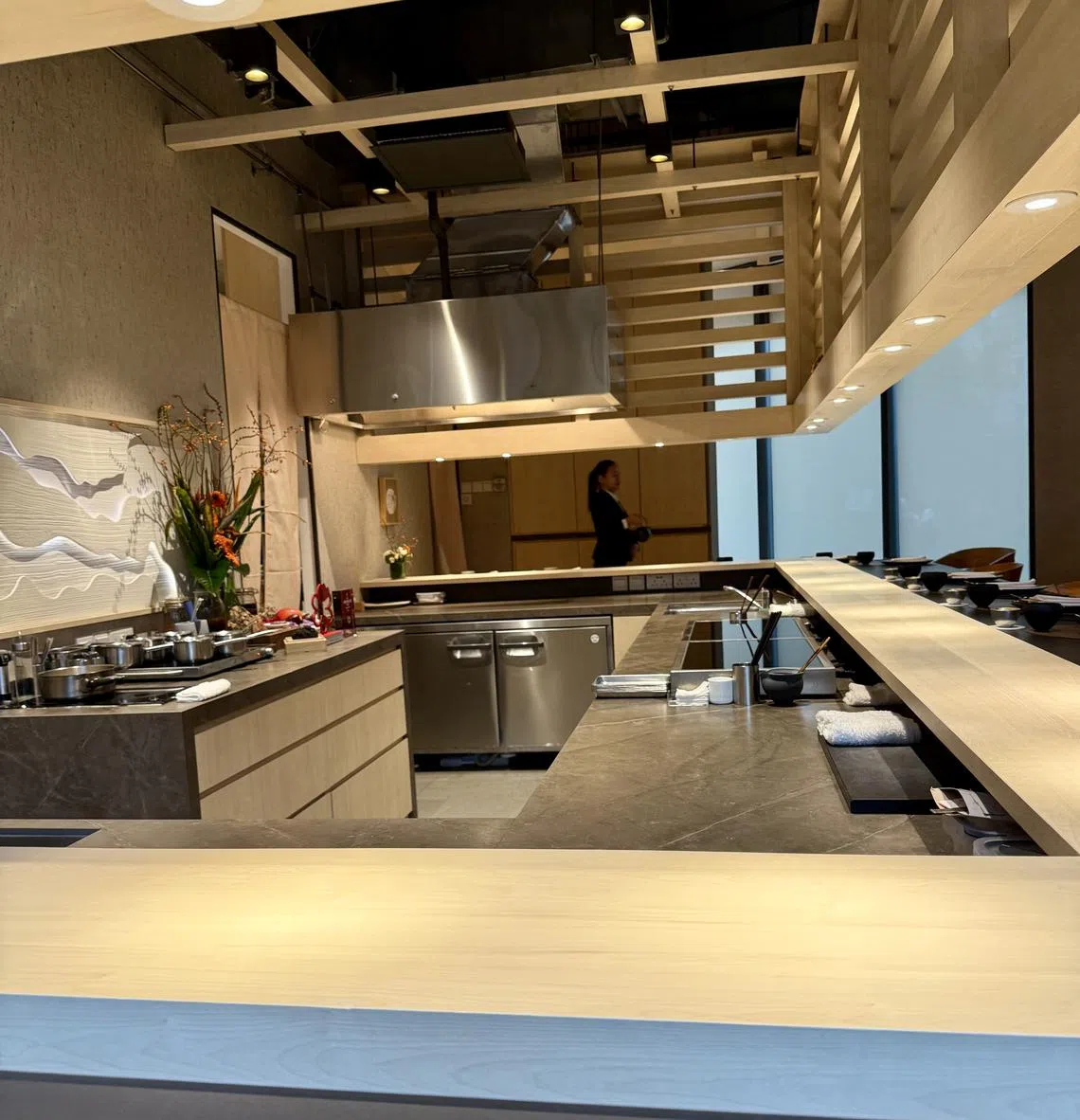
But once you step into the restaurant proper, it feels more like what you would expect. The layout is counter style, helmed by two Japanese chefs for whom conversation may not be in their job description. They are super polite and pleasant, but exceedingly shy, preferring to let their meticulously prepared courses – and sometimes overly chatty servers – do the talking.
One half of the duo behind the counter is Kazuki Arimoto, former sous chef turned head chef and now face of the one-Michelin-starred eatery. He is the successor of Shusuke Kubota, Omakase@Stevens’ original chef who created the French-inspired menu in the first place.
If you’re expecting traditional kaiseiki, think again. Apart from a donabe course, the only thing Japanese about this place is the chefs and the ingredients used.
There are just two menus available: a short one and a long one. The six-course looks attractively priced at S$238, but all the good stuff is reserved for the S$333 nine-course version, so you might as well spring for the latter while you’re there. Or spend the S$238 and pop over to the convenience store for cup noodles later.
Under Arimoto, the food is precise and clean, with a focus on quality ingredients.
The so-called hassun is a trio of appetisers: a raw scallop in clear wasabi water with gazpacho overtones and a lingering finish; a crispy tart shell filled with corn and curry mousse; and a little round doughnut filled with a savoury minced wagyu mixture, topped with a disc of colourful cheese.
A hollowed-out Japanese tomato is filled with Hokkaido snow crab meat, topped with caviar and arranged in a pretty circle of tomato and kombu oil, with aioli piped on the border. The crab is fresh, enhanced by the two oils and caviar, and balanced out by the fruity tomato.
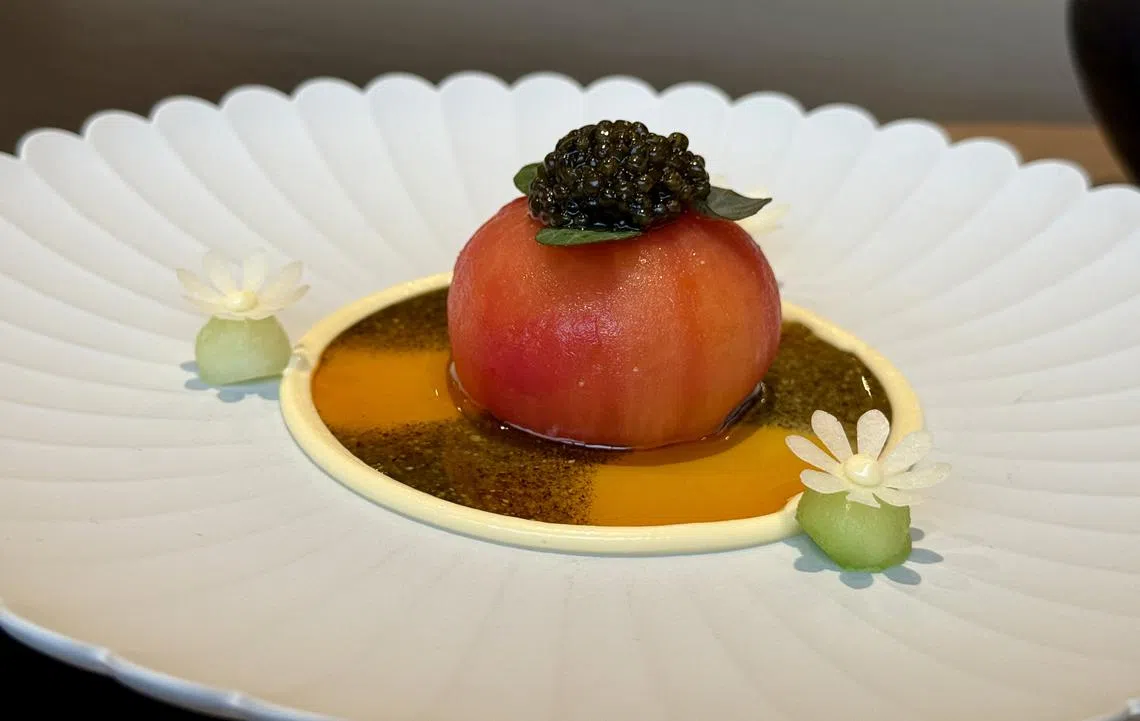
Chewy cold somen is decorated with finely julienned multicoloured radish and chives, mixed with the sweet funkiness of uni for a mouthful of texture and brine.
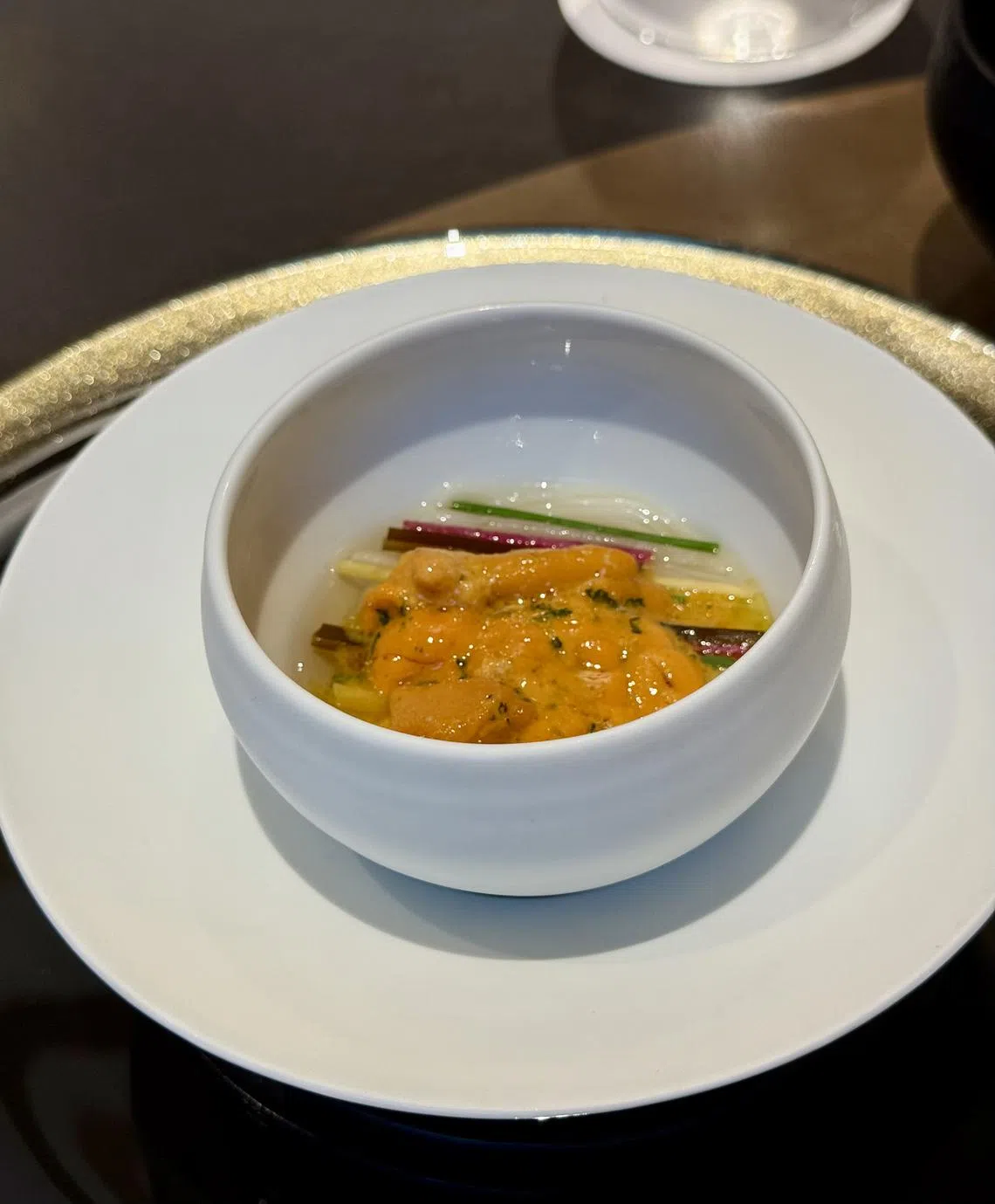
And the crackling skin of glassy textured, barely cooked sea bass sits in a beurre blanc sauce with mussels and raw Japanese squid to give the mild-mannered fish some character.
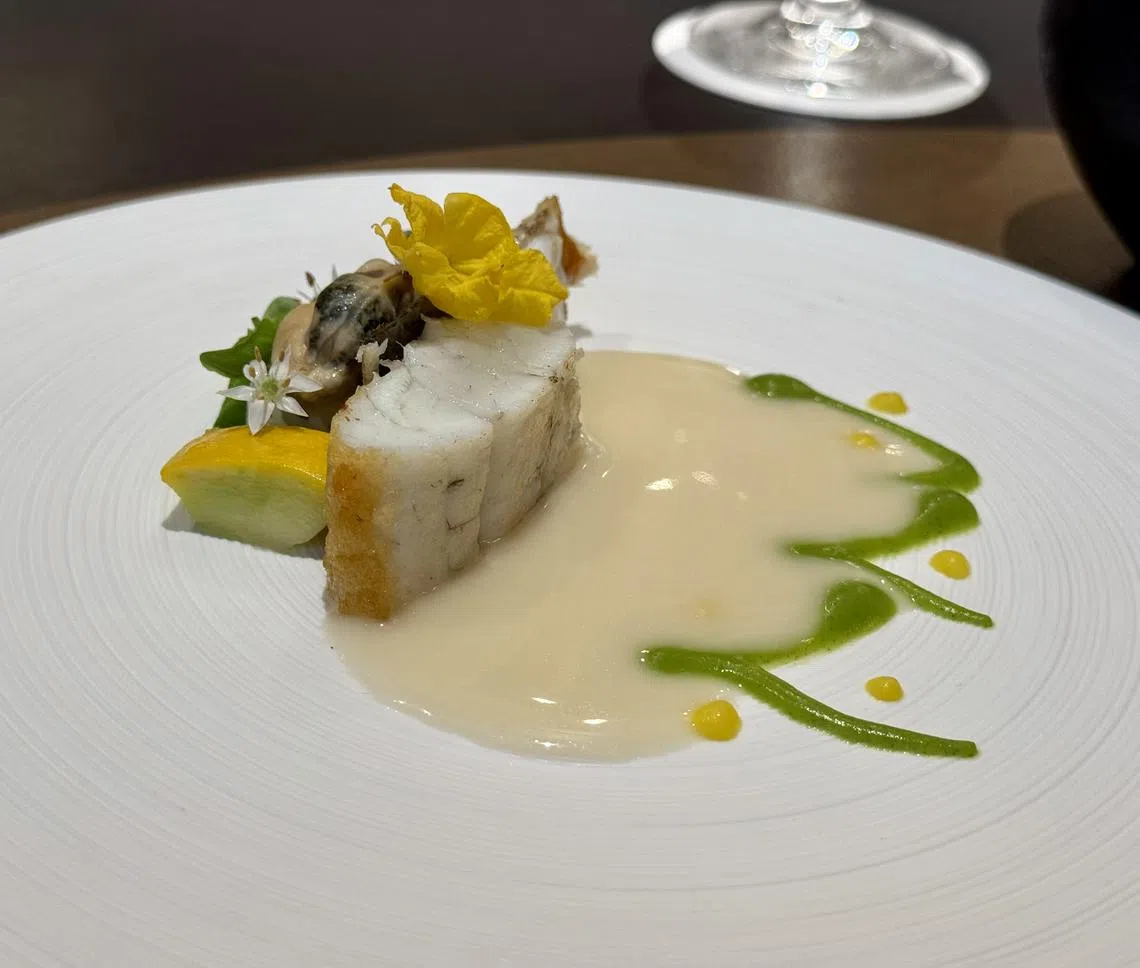
Ingredients and execution stand out, but somehow, the food lacks warmth and personality. It feels well practised with all the elements in the right place, but the final connection isn’t quite there.
That said, the Miyazaki wagyu katsu does win you over with its earnest messaging. A deep-fried cutlet with a lovely crumb coating is trimmed into a perfect rectangle and positioned next to a kanji character written in red miso. Together, they make up the character “wa” in “wagyu”, which also has a double meaning as “harmony”.
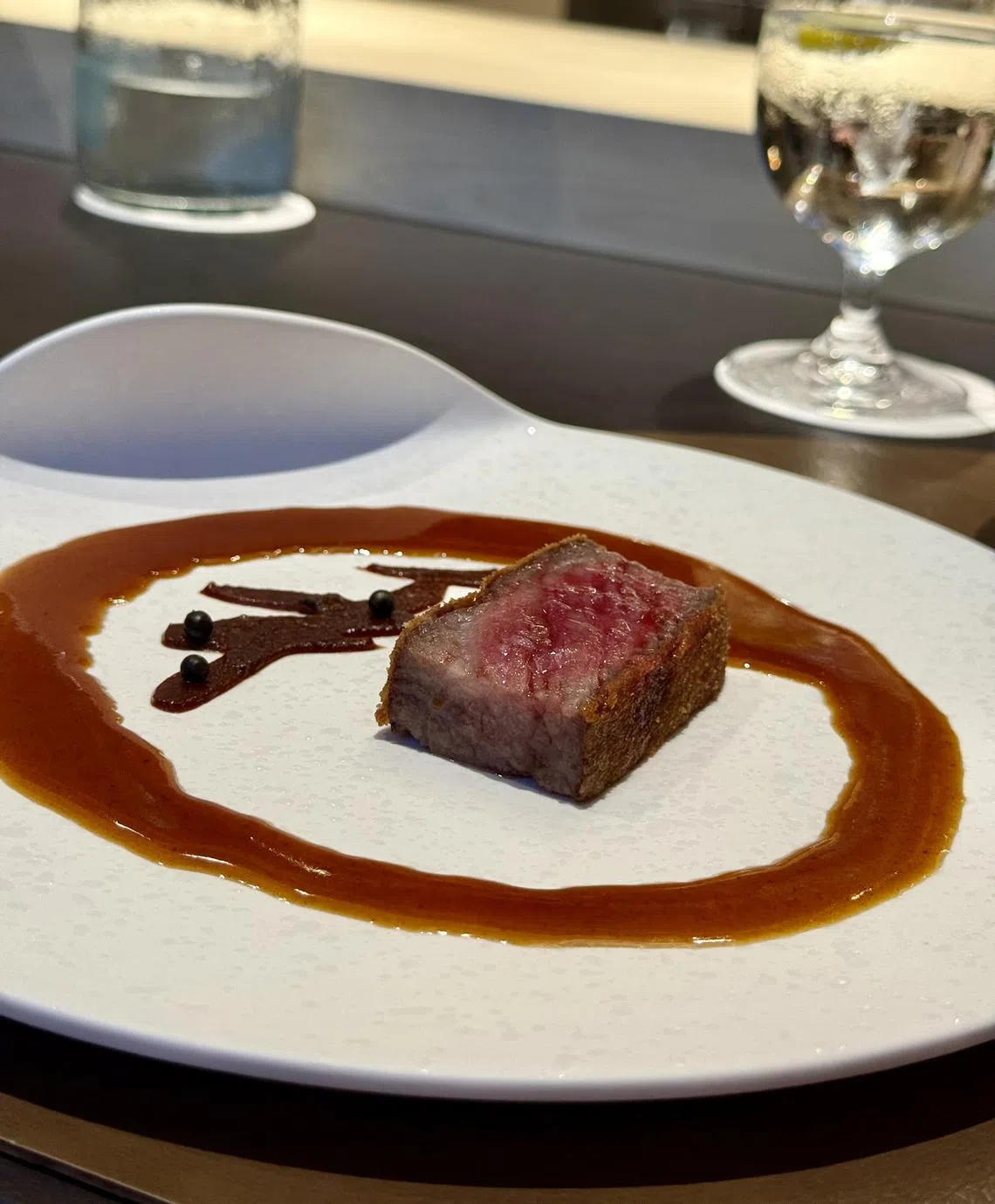
Grilled eel and rice finishes off the savoury courses; crisp-skinned unagi is mixed in fluffy rice drizzled with a restrained tare or sauce that isn’t too salty or strong, with homemade chilli powder to perk it up.
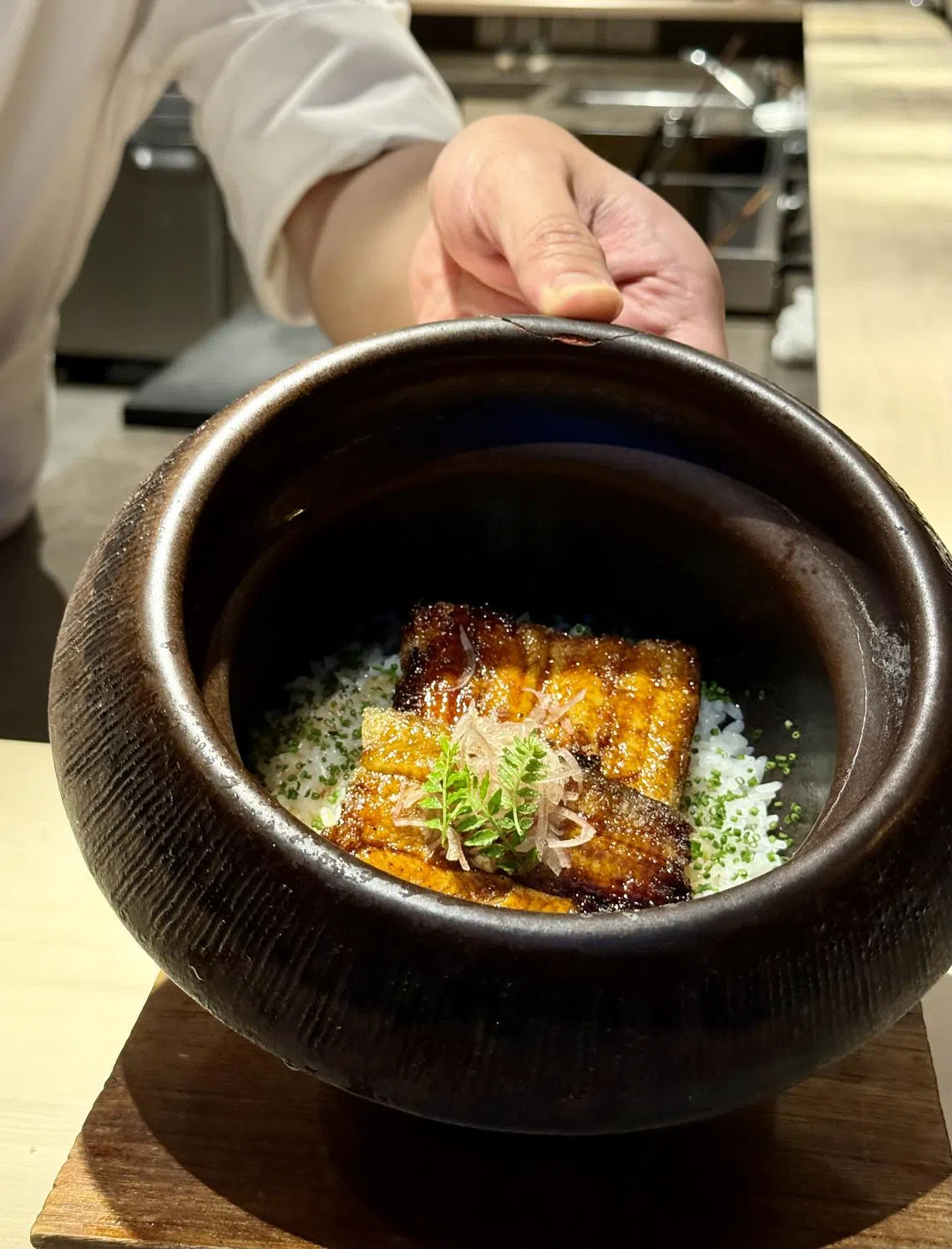
A pre-dessert of red shiso sorbet and jelly made of doburoku or unfiltered sake is an unusual and pleasant palate cleanser, rounded off with shiso leaf and crushed meringue bits.
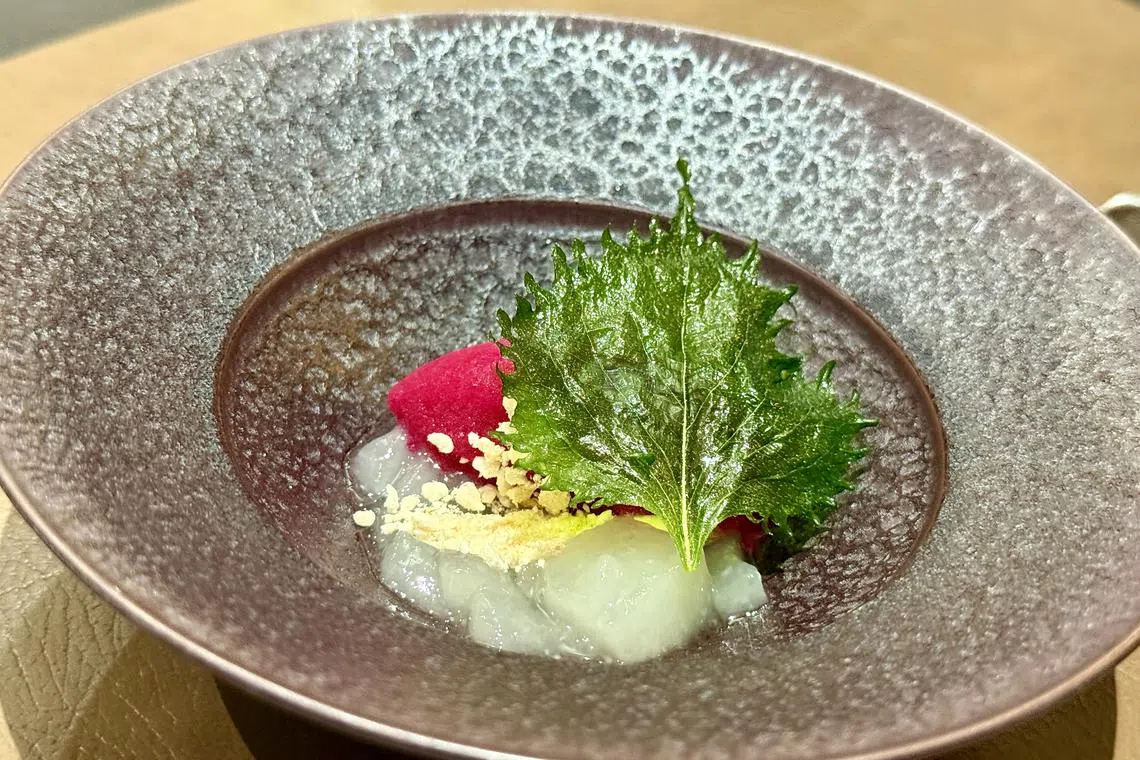
You can see the extent of Arimoto’s attention to detail from the way he painstakingly assembles a swirl of love letter-like cookies into a tall crispy nest filled with coconut mousse, paired with mango sherbet, passion fruit jelly and meringue. For good measure, he uses expensive Miyazaki mangoes and coconut from Okinawa.
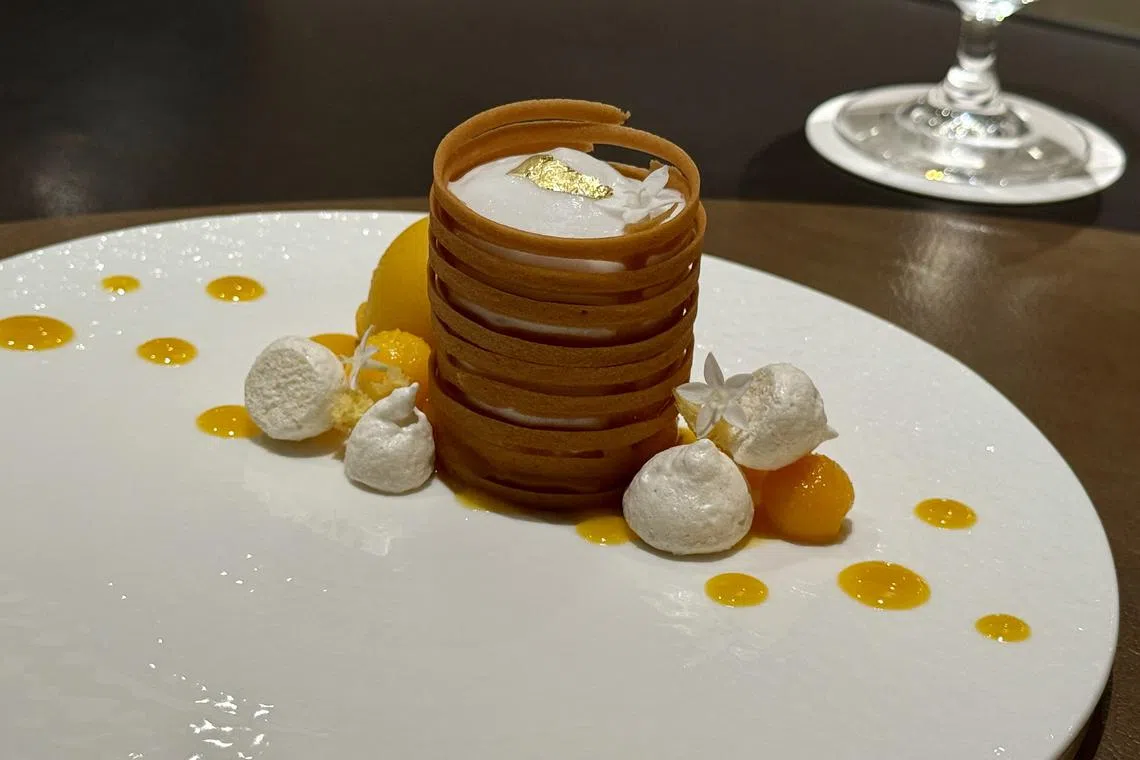
The star for Omakase@Stevens is probably a few years overdue, and its foundations were no doubt laid by Kubota. But credit also goes to Arimoto for maintaining the vision and keeping up the standards. It could be a bit more “wow” going forward, but at least for those discovering this restaurant, better late than never.
Rating: 7
Decoding Asia newsletter: your guide to navigating Asia in a new global order. Sign up here to get Decoding Asia newsletter. Delivered to your inbox. Free.
Copyright SPH Media. All rights reserved.









